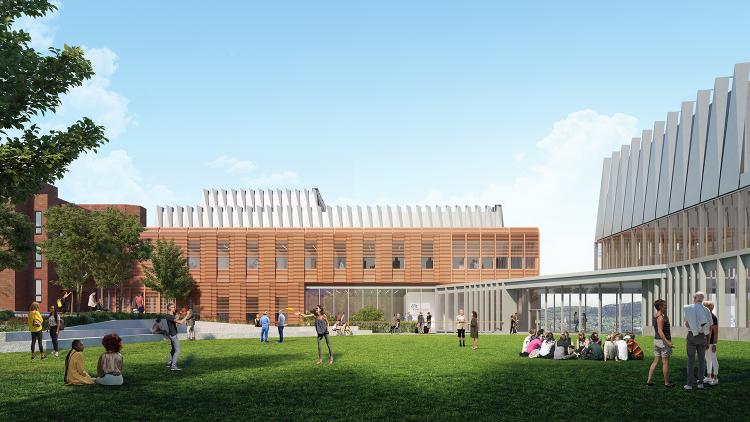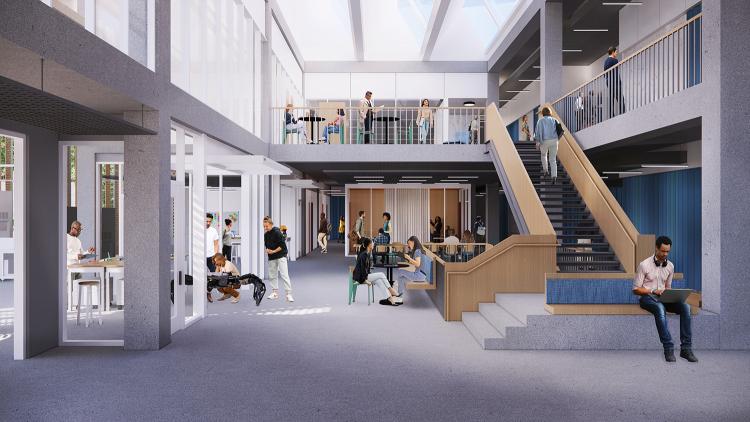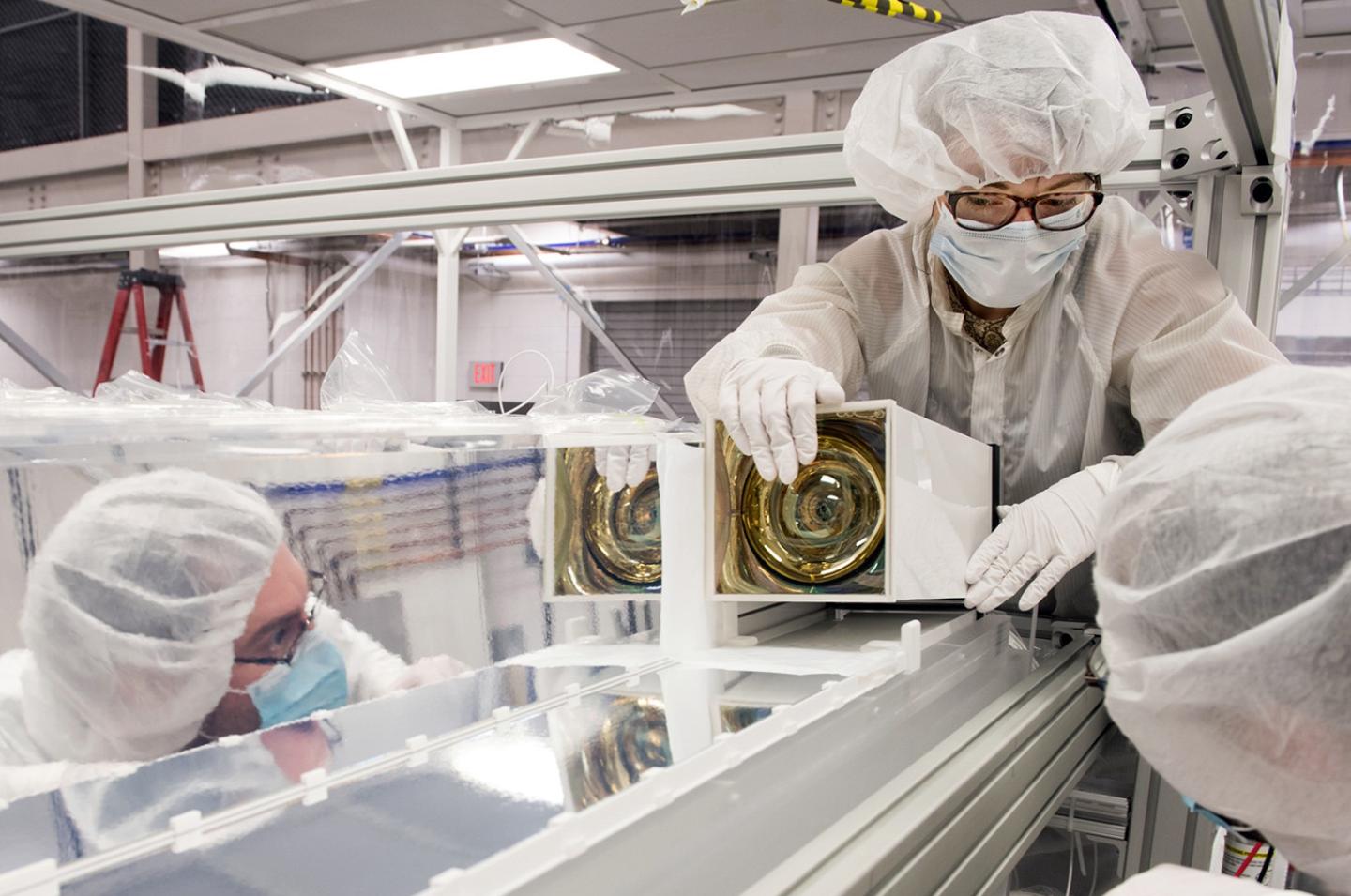Groundwork is underway on a new research-intense structure where Yale scientists and engineers will continue to explore the greatest mysteries of the universe. Dubbed the Physical Sciences and Engineering Building (PSEB), this facility will serve as the central hub for the university’s initiatives in quantum, engineering, and materials science.
PSEB is part of the larger Upper Science Hill Development complex, which will also include a new chemical safety building, an addition to Wright Laboratory, and a new center for instrumentation development. Plans for the complex were born out of a 2018 report from the University Science Strategy Committee, which laid out a vision for the future of science at Yale. The complex will contain a new thermal utilities plant and other sustainability-focused features, supporting Yale’s goal to achieve net zero carbon emissions on campus by 2035 and zero actual carbon emissions by 2050.
“The Upper Science Hill Development is among the most ambitious building projects we have undertaken in Yale’s history. In its intersectional location and capacity, the complex represents enormous potential to bring together the physical sciences and engineering like never before,” says University Provost Scott Strobel.

Supporting a Vision for the Future
The university has committed significant resources to funding the complex, and donations from alumni, parents, and friends will also play a major role in advancing this project. A generous grant from a private foundation is supporting its first phase of construction and accelerating Yale’s continued investment in quantum science, a top research priority for the university.
The emphasis on technical performance in the laboratories and core facilities of PSEB will rival that of any similar projects at the world’s most advanced research institutions. The building will include a 10,000-square-foot cleanroom, core facilities for materials characterization and imaging, and modular, customizable lab spaces for approximately fifty faculty from the Faculty of Arts and Sciences and the School of Engineering and Applied Science, including those in physics, applied physics, and other departments with quantum-focused faculty. Labs will emphasize future flexibility, and many will take advantage of the naturally low vibration levels of the underlying bedrock—essential for optimizing quantum-level experiments and nanofabrication equipment.
“One transformational characteristic of PSEB is that it’s not a building designed around department units,” says Sohrab Ismail-Beigi, Strathcona Professor of Applied Physics and professor of physics and mechanical engineering and materials science, who co-chairs a faculty committee that informs the design of PSEB. “Instead, we think about the space in terms of topical hubs. The ability to co-locate experimental and theoretical researchers from multiple departments working in neighboring research fields should stimulate cross-pollination, new discoveries, and novel ideas.”

Tools of the Trade
A highly anticipated space within the complex is the Advanced Instrumentation Development Center (AIDC), a cross-disciplinary hub for the technical development of devices and instruments for laboratory settings. “Instrumentation is an essential component of the scientific process. Tools and measurement techniques generate the data that allow scientists to look at the world in a new and different way,” says Karsten Heeger, Eugene Higgins Professor of Physics and director of Wright Laboratory, citing spectrometers and neutrino detectors as two examples.
The AIDC will serve as a central destination for a diverse range of researchers across campus, leveraging expertise from many departments and contributing to their device-driven research success.
A Generational Complex
The first phase of construction on the complex begins this summer, and the overall project is slated for completion in 2030. “We are already making critical contributions to quantum. Faculty are illuminating the physical systems of our universe and designing technologies to be applied across fields and industries,” says Strobel. “And though we can’t predict where science will be in fifty years, with the Upper Science Hill Development, we are confident Yale will still be pushing the frontiers of knowledge.”
